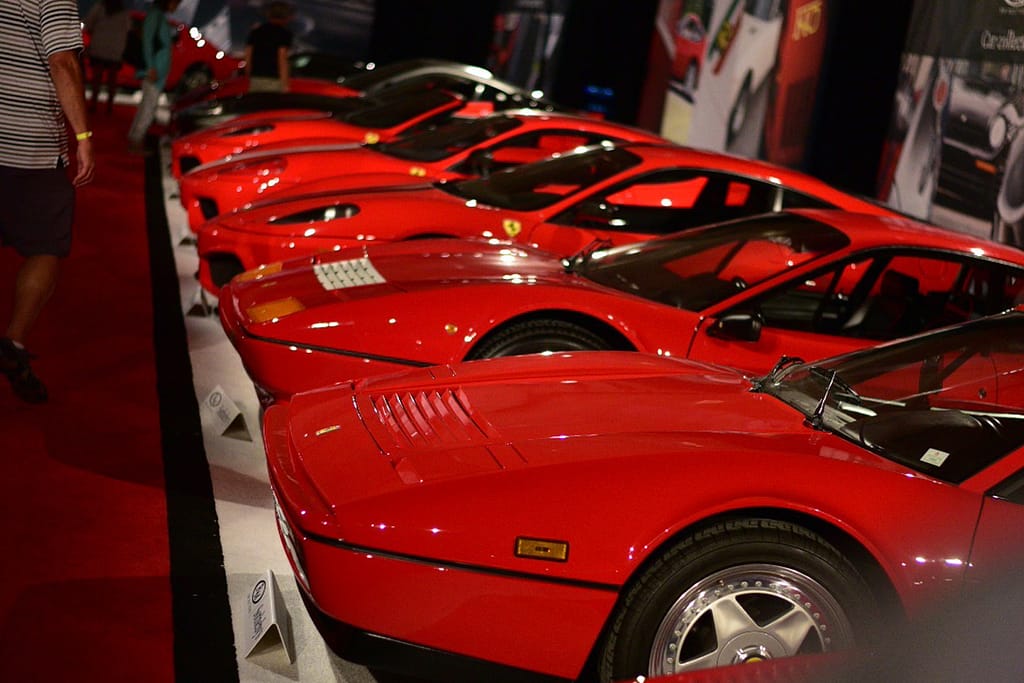It’s August once again, and the collector car world is turning its attention to Car Week to gauge the market’s temperature. The big auction houses have lined up some of the rarest cars on the planet, hoping to entice bidders to part with substantial sums of money in the pursuit of fulfilling childhood dreams. With RM Sotheby’s, Gooding & Company, Bonhams, and Mecum all in the mix, there’s plenty to choose from and take home.
The overall number of collector cars seems to be down slightly compared to years past, so I wouldn’t expect the total dollar amount to break records. That being said, the number of no-reserve cars appears to be way up! Usually, anything under $300K is no reserve (except for Mecum), but this year we’re seeing some big collections going “no reserve,” which will provide a solid measure of the market. This likely has to do with the “Bring a Trailer” effect, as you can sell anytime you want and have plenty of online auctions to choose from. With online options, you don’t have to wait months or spend thousands entering and then shipping your car to Monterey. Over the past year or so, I’ve noticed prices dropping since the end of the COVID-era “gotta-have-now” instant gratification wave.
Another factor is interest rates, which have climbed from nearly zero to close to 10%—nothing is free anymore. The amount of borrowed money in the collector car world is staggering. You can finance a collector car for 20 years, lease one, and private equity has bought up some big cars over the years so they wouldn’t get left out. Now that we have real interest rates, that market is changing too. Not long ago, you could finance a collector car at 3% interest, leave your money in the market, and make a 10%+ return. Those days are gone, and most of those returns have been spent.
We also seem to be facing that generational shift I thought would have happened five years ago but clearly underestimated. The collectors are getting older and seem to have plenty of toys. The real estate they occupy, along with the maintenance, insurance, and taxes, can be daunting, so the older collectors are starting to thin the herd and refine their collections. Cars older than about 1970 may see a decline simply because the people who really desire them are aging out.
This all adds up to the vast majority of the cars offered selling below the low estimate, and the auction houses do a good job of preparing the sellers. Bidders will need to be cautious of shill bids. The owners and auction houses know what they can sell the car for, and it’s not illegal to bid them up just under the reserve. The excitement in the room, combined with a couple of adult beverages, can make your hand go up and “Boom,” you own it. As you watch, notice how close a car gets to its low estimate on the no-sales. If it was within 10% or so, it was most likely a shill bid, or the auction house would have sold it and collected the commission.
Remember, the seller usually pays 5-10% to consign (plus entry fees and shipping), and the buyer pays 12% (for $250K or less) and 10% of the amount over $250K. Roughly speaking, the commission on every car is a bit over 15 to 22%! While these auctions are expensive to put on, they can take the buyer’s side, hand it to the seller, and still make over 5%. As you watch the cars with reserves, the shills have no fear because it doesn’t cost them anything!
To sum it up, my guess is that overall, we’re going to see a market correction. The upcoming election, inflation, and interest rates, combined with baby boomers slowing down, mean very few record sales and a lot of average sales mixed with unrealistic sellers dragging unsold cars home. The great cars will sell for great prices, but the average cars will see softer demand.







